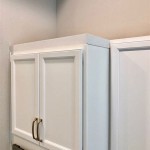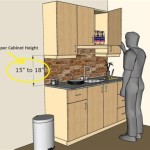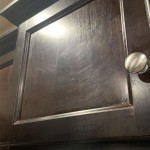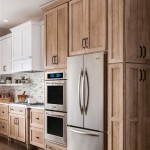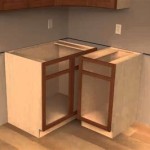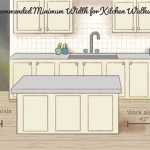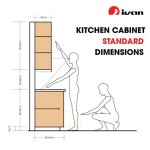How To Trim Kitchen Cabinets Fit Refrigerator
A new refrigerator can be a welcome addition to any kitchen, but if your existing cabinets are not properly sized for the new appliance, it can leave you with a frustrating gap or an awkward overhang. Fortunately, trimming kitchen cabinets to fit a refrigerator is a relatively straightforward project that can be accomplished with basic carpentry skills and a few tools. This guide will provide step-by-step instructions on how to trim your kitchen cabinets to seamlessly accommodate your new refrigerator.
1. Measure and Prepare
Before you start any work, ensure your refrigerator is delivered and positioned in the space where it will be installed. You will be working directly around the refrigerator, so it's crucial to have it in its final location.
Next, carefully measure the width, depth, and height of the refrigerator. Note these measurements and take into account any existing cabinet overhang or gaps you need to adjust. For instance, if your refrigerator is 36 inches wide and the cabinet opening is 35 inches, you'll need to trim 1 inch from each side of the cabinet opening.
Once you have your measurements and have considered the necessary adjustments, you can proceed with the following preparation steps:
- Empty and remove the cabinet doors and shelves: This will give you better access to the cabinet frame and make the trimming process easier.
- Remove any trim, baseboards, or molding surrounding the cabinet opening: This allows you to work with a clean, uncluttered surface.
- Mark the cut lines: Using a pencil, carefully mark the trim lines on the cabinet sides and top, ensuring they are accurate and level. If you have a laser level, this will help ensure precise cuts.
2. Trim the Cabinets
Now you are ready to start trimming the cabinets. This requires a circular saw or a jigsaw, depending on the thickness and material of your cabinets.
For cabinets made of plywood or MDF, a circular saw is ideal. When using a circular saw, it is essential to use a guide to ensure straight, accurate cuts. A straight edge clamped to the cabinet surface works well. Place the saw's base firmly against the guide and make slow, steady cuts along the marked lines.
For cabinets made of hardwood or thicker materials, a jigsaw might be a better choice. A jigsaw allows you to make curved or angled cuts, which can be necessary depending on the shape of your refrigerator or cabinet opening. When using a jigsaw, follow the marked lines carefully and use a fine-tooth blade to ensure a clean, smooth cut.
Use a measuring tape and a level to check the accuracy of your cuts after each trim. If necessary, make slight adjustments until the cabinet opening is the perfect size. Once you are satisfied with the cuts, you can carefully remove any excess wood using a chisel or sandpaper.
3. Install the Trim
Now that your cabinets are trimmed to size, it's time to install the trim and finish the project. Choose a trim material that matches your existing cabinets or complements the overall kitchen design.
The trim will be installed on the edges of the cabinet opening to create a finished look and hide any imperfections. The specific method for installing the trim will depend on the material and your preferences. For example, you might use wood glue and nails to secure the trim, or you can use a nail gun for a faster and more secure installation.
After installing the trim, take some time to sand the edges and ensure everything is level and even. You can then paint or stain the trim to match your cabinets.
Once you're happy with the trim installation, you can re-install your cabinet doors and shelves. Take a moment to admire your work and enjoy your new refrigerator in its perfectly fitted space!
While trimming cabinets can be an involved project, it's a relatively achievable task for DIY enthusiasts with basic woodworking skills and a little patience. With the right tools and a clear understanding of the steps involved, you can successfully customize your kitchen cabinets to accommodate any appliance and achieve a seamless, polished look.

Refrigerator Gap Filler How To Guide With Photos

Maximizing Kitchen Storage Space With An Over Fridge Cabinet

How To Build A Refrigerator Cabinet Diy Tutorial
How To Build A Refrigerator Cabinet Surround Ana White

Relocating The Cabinet Above Fridge
:strip_icc()/101688233-4633f30608eb470f917153b3006980a0.jpg?strip=all)
6 Ways To Achieve The Custom Look Of A Built In Refrigerator

Adding Crown Molding To Kitchen Cabinets Young House Love

Building The Refrigerator Enclosure Remodelando La Casa
How To Build A Refrigerator Cabinet Surround Ana White

Maximizing Kitchen Storage Space With An Over Fridge Cabinet
Related Posts

